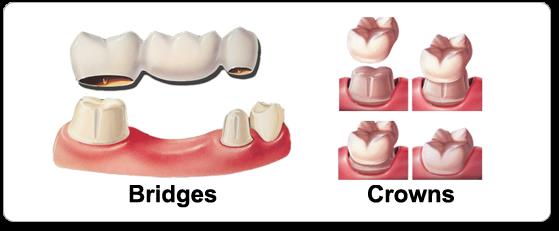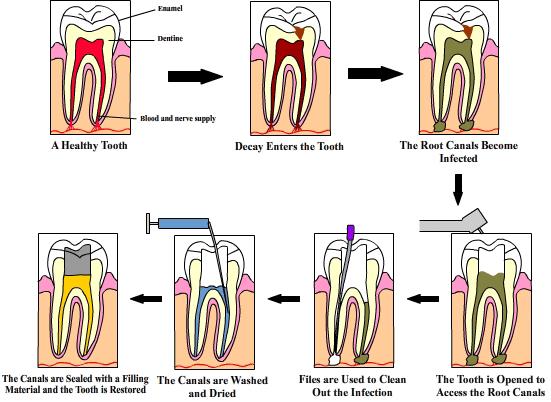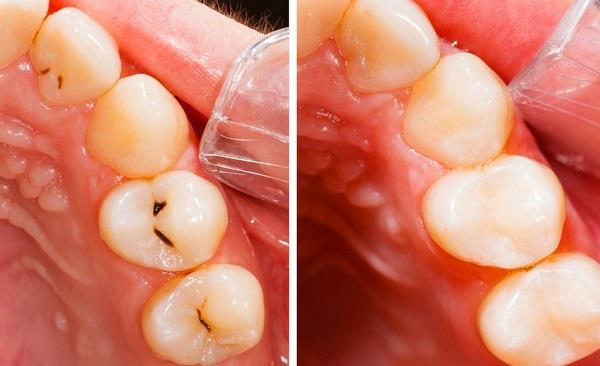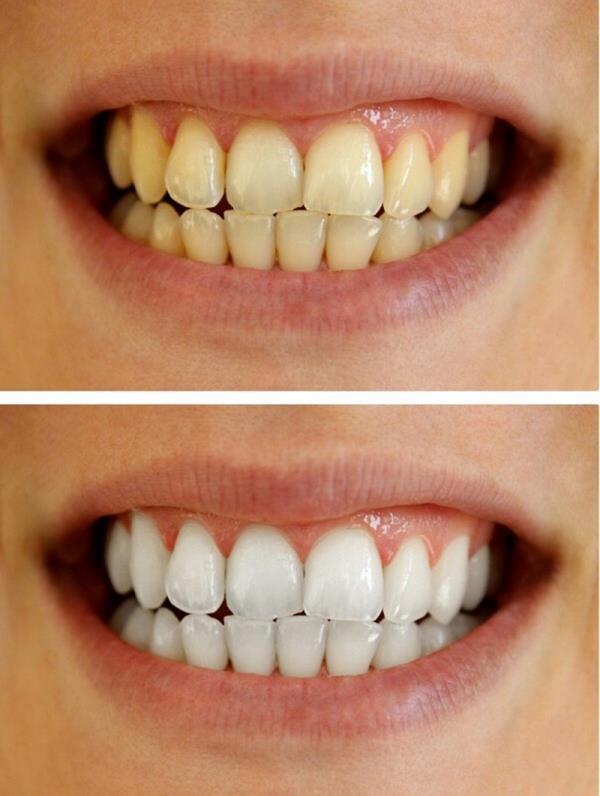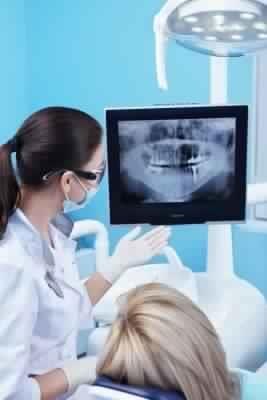Crown and bridge
A crown is used to entirely cover or "cap" a damaged tooth. Besides strengthening and protecting a damaged tooth, a crown can be used to improve its appearance, shape or alignment of a tooth. A crown can also be placed on top of a natural tooth or an implant to provide a tooth-like shape and structure for function. A crown restores the function and appearance of a damaged, reconstructed or missing tooth. Traditionally, crowns are of 3 types- metal (non-aesthetic), metal-ceramic (Porcelain fused to metal/ PFM) which is tooth colored or ceramic only (metal-free). A Bridge (Fixed partial denture/FPD) - may be recommended if you have missing one or more teeth. Gaps left by missing teeth eventually cause the remaining teeth to rotate or shift into the empty spaces, resulting in a bad bite. The imbalance caused by missing teeth can also lead to gum disease and temporomandibular joint (TMJ) disorders. Bridges are commonly used to replace one or more missing teeth. They span the space where the teeth are missing. Bridges are cemented to the natural teeth or implants surrounding the empty space. These teeth, called abutments, serve as anchors for the bridge. A replacement tooth, called a pontic, is attached to the crowns that cover the abutments. As with crowns, you have a choice of materials for bridges. Crowns may be recommend in the following situations: Replace a large filling when there isn't enough tooth remaining Protect a weak tooth from fracturing Restore a fractured tooth Attach a bridge Cover a dental implant Cover a discolored or poorly shaped tooth Cover a tooth that has had root canal treatment


